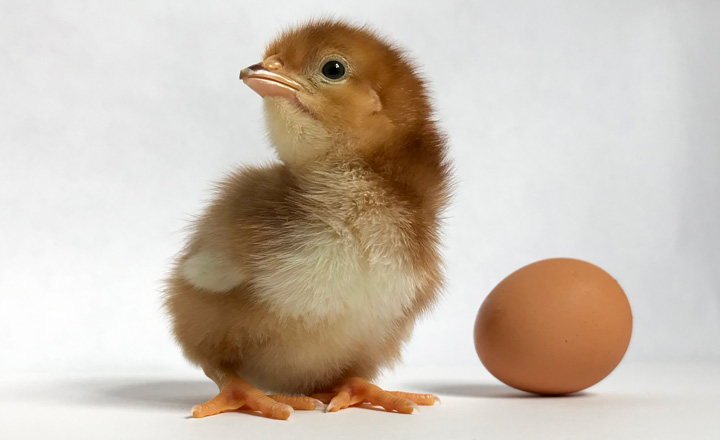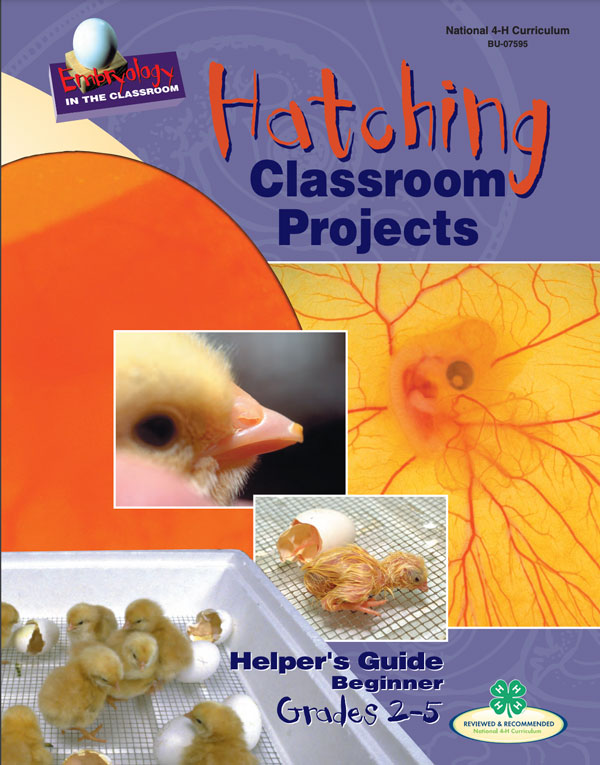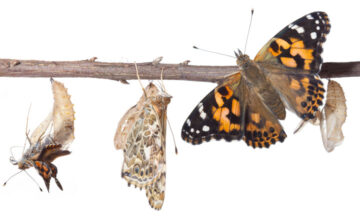
Curriculum Summary:
The National 4-H Embryology Hatching helper’s guide uses the experiential learning model to teach children to pick and count chicks, use an incubator, and build a brooder. Skills learned are observing, comparing, measuring, and communicating. This book walks youth through the growing processes inside eggs as the embryo grows.
These materials on this website have been developed by North Carolina 4-H to enhance, enrich, and extend the lessons in the National 4-H curriculum, 4-H Embryology: Hatching. You can purchase your copy of the 4-H Embryology: Hatching student guide book at Shop4-H.
Next Generation Science Standards:
3-LS1-1: Develop models to describe that organisms have unique and diverse life cycles but all have in common birth, growth, reproduction, and death.
3-LS3-1: Analyze and interpret data to provide evidence that plants and animals have traits inherited from parents and that variation of these traits exists in a group of similar organisms.
4-LS1-1: Construct an argument that plants and animals have internal and external structures that function to support survival, growth, behavior, and reproduction.
North Carolina Essential Science Standards (2023):
Lesson 1:
- LS.K.1.1 Engage in argument from evidence to summarize the characteristics of living organisms and nonliving things in terms of their: structure, growth, changes, movement, basic needs
- LS.K.1.2 Use models to exemplify how animals use their body parts to obtain food and other resources, protect themselves, and move from place to place.
- LS.2.1.1 Use models to summarize the life cycle of animals including: birth, developing into an adult, reproducing, aging, and death.
- LS.2.1.2 Obtain, evaluate, and communicate information to compare life cycles of different animals.
- LS.4.1.1 Use models to explain that plants and animals have external structures that function to support survival
Lesson 2:
- LS.K.2.1 Analyze and interpret data to compare the characteristics of different types of the same animal to determine individual similarities and differences.
- LS.2.2.1 Obtain, evaluate, and communicate information to summarize ways in which animals closely resemble their parents and ways they are different.
- LS.2.2.2 Analyze and interpret data to illustrate variations among offspring of the same parents
- PS.5.1.2 Carry out investigations to explain whether the mixing of two or more substances results in new substances.
Lessons 3, 4, and 5:
- LS.K.1.1 Engage in argument from evidence to summarize the characteristics of living organisms and nonliving things in terms of their: structure, growth, changes, movement, basic needs.
- LS.2.1.1 Use models to summarize the life cycle of animals including: birth, developing into an adult, reproducing, aging, and death.
- LS.2.1.2 Obtain, evaluate, and communicate information to compare life cycles of different animals.
Lesson 6:
- LS.K.1.1 Engage in argument from evidence to summarize the characteristics of living organisms and nonliving things in terms of their: structure, growth, changes, movement, basic needs.
- LS.1.1.1 Obtain, evaluate and communicate information to summarize the needs of different plants and animals.
- LS.1.1.2 Analyze and interpret data to compare how the needs of plants and animals can be met in different environments.
Age range: 7-10
Grade level: 2nd – 5th Grades
Life Skills:
- Planning and Organizing
- Keeping Records
- Teamwork




